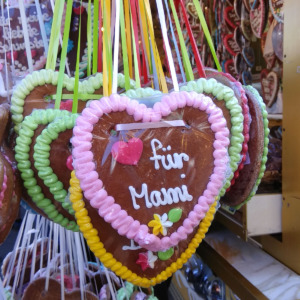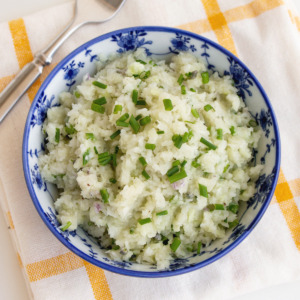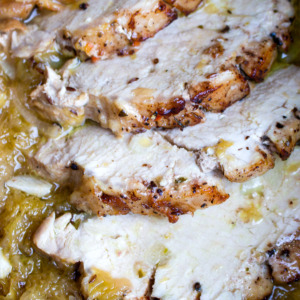German Cold Cuts or deli meats are super delicious, and I bet this is why you are here!
In this post, you will learn about the varieties of cold cuts enjoyed in Germany and Austria. I help you understand the choices.
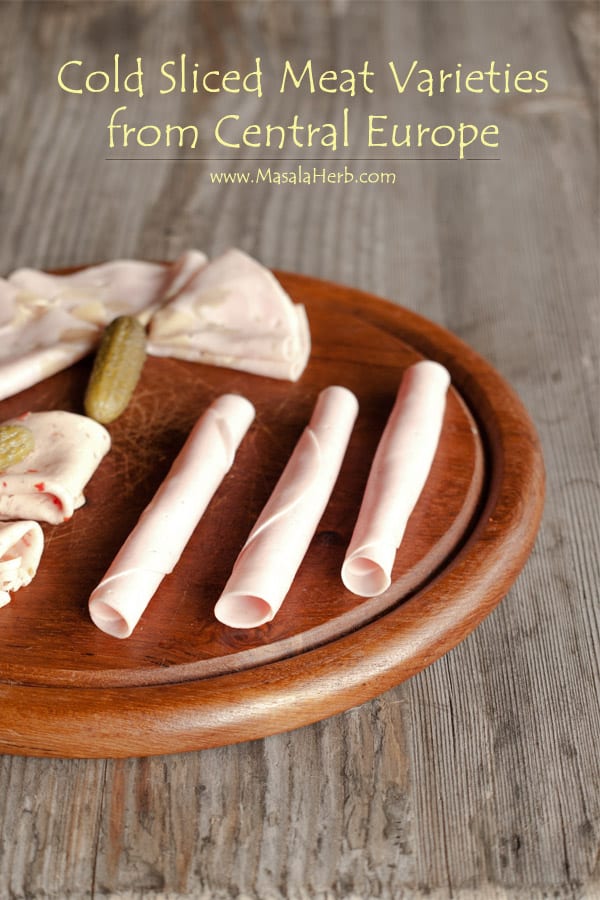

Global Food Recipes
with Spices and Herbs
Free E-Book available for a limited time. Grab yours now and get instantly inspired!
You missed out!
Jump to:
❤️ Cold Cuts in German-speaking Countries
There are countless different cold meats and German sausages displayed in grocery shops everywhere in Europe. They differ in flavor, ingredients used and looks.
The choice is overwhelming between Austrian and German cold cuts. Regional variations are very common and are part of traditional German food and the Austrian identity.
Each country and even region will have their traditional meats and sausages.
Austrian and Bavarian shops (German) have a similar choice of cold sliced meat cuts, and frequently the same meats are known with different names across the borders.
The best example would be a popular thick smooth, juicy and lightly spiced pink meatloaf, which is better known in some parts of Austria and Germany as Fleischkäse (literal translation: meat cheese) or also as Leberkäse (Literal translation: liver cheese), but both are the same things, the same meat variation.
I will get to the most common cold meat cut varieties from German cold cuts in this post, and I will share my all-time favorite ones with you. But first I want you to take in these pictures, which I took with a mobile in a local shop in Austria.
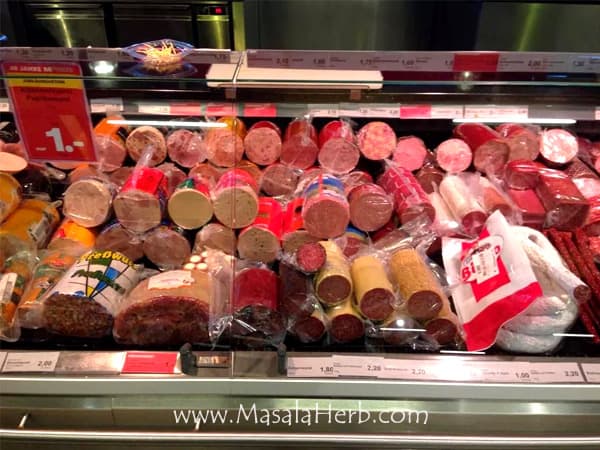

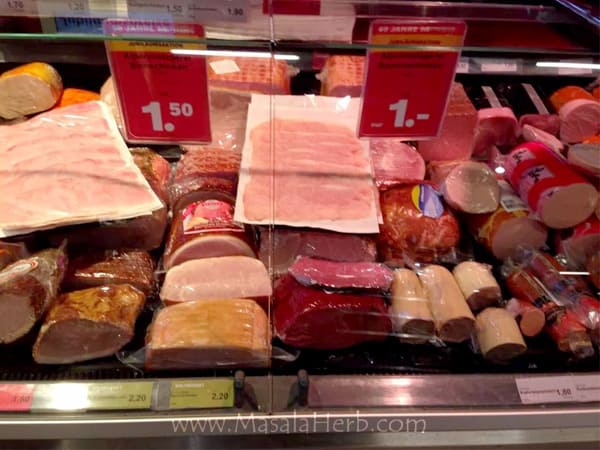
🥓 What are cold cuts?
Meat and sausage rolls are cut into very thin slices with a special meat cutter and can be consumed instantly, hence cold cuts.
Most meats are cured raw cold cuts.
Back in the 80s, most of the households had their meat cutters and my mother has one too; however, she hasn't used it in 20 years.
Back then, I think, so it was more common to buy the meat rolls – maybe because they were cheaper – and to cut thin slices at home.
Nowadays, it's easier to go to any grocery store, look out for the meat section, which is usually quite prominently displayed, pick your order and let the friendly lady or sir do the slicing job.
Easy, one might think, right?
It is if you know the local language, if not, then it might be a bit challenging to get what you want.
I remember seeing foreigners struggling and feeling overwhelmed by all the quality meat goodies, and I did help a few foreigners to get what they wanted.
🛒 How to buy cold cuts in Germany and Austria?
In the meat display, you will see the different cold meat cuts, and you will also notice name and price tags somewhere on the borders or somewhere near the meat rolls.
If you don't know the most common meat cuts, you can inquire about the different types in the display.
For example, you will see 5 different ham variations, sitting right next to each other and the name and price tags are somewhere floating around the ham squares, and it makes sense to ask the luncheon meat seller.
Normally, the prices are per 100 grams/10 dekagrams of cut meat slices, and occasionally, they also mention per kilo, just as a reference.
The price heavily depends on the meat quality, so some will be cheaper per 100 grams and others will cost more, but they taste better as well.
In Austria, it's common to calculate weight with dekagrams instead of grams.
So, while you might be ordering 100 grams of a particular cold meat, the lady cutting your meat into thin slices might answer by saying 10 dekagrams.
Usually, 100 grams of a sausage might be more than enough, which will last a few days before it gets bad.
It doesn't really make sense to buy 200 grams except if you are planning a party or picnic.
Sporadically, the meat sections of grocery stores also sell a few slices of different cold meats together so that people get to try around. You can always ask to try a slice of a particular sausage type to taste it first.
When ordering the meat slices, you get to choose too if you want them packed to take home or if you want the lady at the counter to make a bread sandwich with the cold cuts.
You get to pick the sausage you want in your sandwich, and you can add a cucumber pickle or sweet green chilies, the choice is up to you.
Once you finish your order, the lady, or sir at the counter will wrap it all up and stick a label on it with the weight, price and content description.
You are only left to pay it at the cash counter with all the other grocery items and that's it.
Store the meat cut packs in the cool dairy section in your fridge. Salami can last up to 2 weeks. Pink meat cuts need to be consumed within 7 days.
🥩 Cold Cut Types
There are 4 main different cold meat/sausage preparations, which include:
- Raw Cold cuts/sausages such as Salamis
- Cooked Cold cuts/sausages such as Liver sausage, Bierwurst
- Brewed Cold cuts/sausages such as Extrawurst, Bologna and Gelbwurst
- Cured or smoked Cold Custs such as Speck and Teewurst
Cold cuts/sausages are made with either or mixed with meats such as pork, beef, wild game, veal, mutton, horse and poultry/turkey. The quantity of lard added depends on the sausage type.
Each of the 3 first cold meat preparations is reduced from chunks to a fine consistency and then salts, herbs, and spices are added. Speck, alone, is a whole piece of meat that is cured.
Various spices and herbs are added to cold cuts during the preparation. The seasoning defines the flavors and style of the sausage.
Some of the most common sausage recipes include mace, nutmeg, cardamom, lemon zest, mustard seeds, garlic, coriander, parsley, vanilla, ginger, allspice, marjoram, thyme, rosemary, black pepper, white pepper or green pepper, and salt to the meat ingredients.
Honey and chopped onion can also be added, which, for example, is commonly done with the Leberwurst.
The most common Cold cuts are usually raw or brewed, whereas the raw cold cuts can be stored longer.
Pink-shaded brewed cold cuts can be kept for a few days only before they start to get bad.
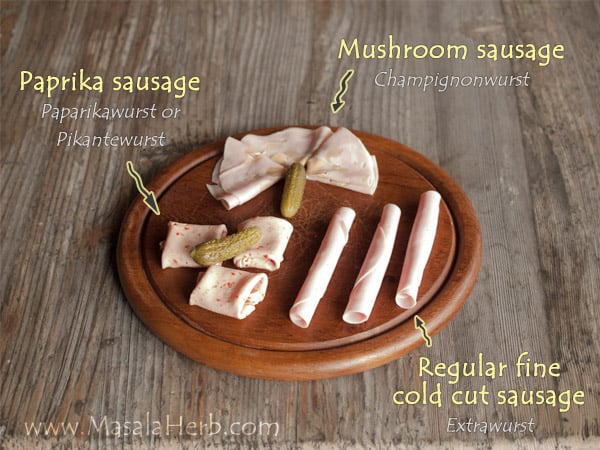
The most common pink-shaded cold cuts are the popular Extrawurst, Paprikawurst (or Pikantewurst) and Champignonwurst as seen in the picture above.
All three can be found all over Austria and Bavaria.
Especially the Extrawurst, the regular fine cold cut sausage, is an all-time favorite in Austria.
Incidentally, a well-known Austrian criminal serial with a German Shepard as the star detective, sees the German Shepard asking for Extrawurst sandwich treats. Yep, even our pets eat the best of sausages…
Other pink-shaded cold cuts include:
- All the different ham varieties – for example, mountain ham and pressed ham
- sausages based on the Extrawurst (as Paprika and mushroom sausage) – for example, Olive sausage, pickled cucumber sausage, cheese sausage, chili sausage, pistachio sausage etc
- foreign cold meats such as in Hungary, Slovenia, or Italy's famous Italian cold cuts.
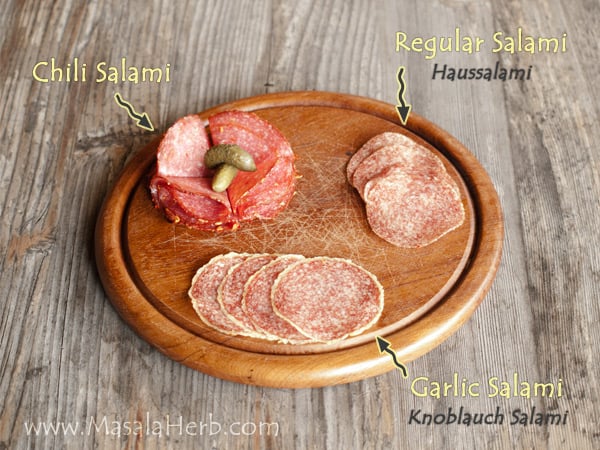
Then, of course, we have our beloved raw cold cuts such as Salami.
Salamis are omnipresent all over Europe, and there are countless variations.
Some are fattier, some are less.
Some are more spiced than others and as you can see, they can vary in the intensity of red saturation. You can make a salami rose with thinly sliced salami.
Tyrolean Speck a delicacy from the Tyrol region in Austria, has a PGI status and has been around since at least the 15th century.
This cured pork belly or pork back meat is smoked and sometimes spiced as well. English bacon or Italian Pancetta are most similar to Speck.
Its regional brother, the South Tyrolean Speck, a region that is now Italy, has a similar preparation and maturation.
🔠 German Cold Cuts Words
Sausage – Wurst
Ham – Schinken
Paris mushroom – Champignon
Bell pepper/capsicum – Paprika
Garlic – Knoblauch
👁️🗨️ What to serve with cold cuts to entertain guests
- Beef liver pate
- Liptauer spread
- Cream cheese spread
- Spelt bread, black bread, bread rolls or Kaisersemmel
- Obatzda dip
- Pickled cucumbers, chili Pepper, onions, beets, or carrots
- Ground horseradish
- Butter (my dad's favorite)
- Cheese slices such as Emmental, Gruyère, Edam or soft cheese such as Saint Albray, Brie and Chaumes
- Fruits such as figs, grapes, and apples
- Nuts such as walnuts, chestnuts.
- Preserves such as fig jam, spiced red currant chutney, lemon marmalade or kumquat marmalade.
- Bavarian potato salad or Cucumber salad

Global Food Recipes
with Spices and Herbs
Free E-Book available for a limited time. Grab yours now and get instantly inspired!
You missed out!


